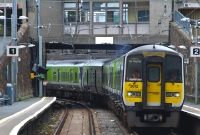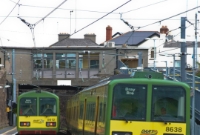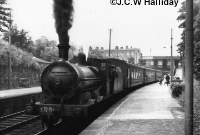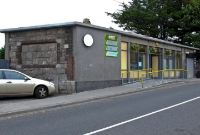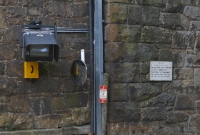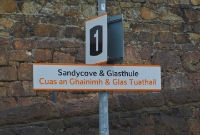Sandycove
Sandycove & Glasthule, to give its full title, is located within Dublin's southern suburbs south of Dun Laoghaire on the Rosslare line. The line through Sandycove was original built in 1817 as a horse drawn tram route, used to carry stone from Dalkey Quarry through to Dun Laoghaire Harbour. In 1844, the trackbed of the tramway, by then no longer in existence was converted into the revolutionary Atmospheric system, which operated from Dalkey to Dun Laoghaire. This was converted to conventional railway operation by the Dublin & Wicklow Railway in 1854, who in the following year provided a station at Sandycove, consisting of up and down platforms, accessed by ramps leading from the adjacent road overbridge at Summerhill Rd. Unusually the station building was located above the tracks. This structure was largely replaced by a more modern building in the 1960s by CIE. Sandycove is located within the southern end of the narrow cutting from Dun Laoghaire, and is only provided with basic narrow platform shelters. A new lift shaft was constructed on the up platform during the suburban upgrade. At the south end of the up platform was also the 1900 built DWWR signal cabin, replaced by a Dublin South Eastern structure in 1923, and taken out of use in 1926.
